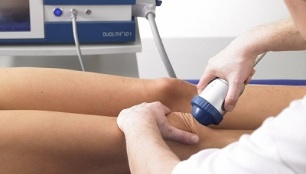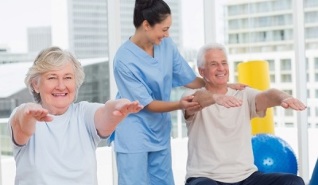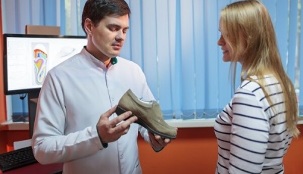
Osteoarthritis means damage to the joints and degenerative-dystrophic changes in them. This requires competent and timely treatment. It may involve a complex of conservative methods or imply the need for surgical intervention.
Osteoarthritis is a chronic disease of a degenerative-dystrophic nature. It involves the destruction of cartilage and pathological changes in the capsule, synovium, ligament apparatus and adjacent bone structures. Pathology requires an integrated approach to treatment.Medications
One of the main areas of conservative treatment for osteoarthritis is the use of medication. The following medications are commonly prescribed:
- Non-steroidal anti-inflammatory drugs. They relieve inflammation, pain and fever.
- Glucocorticosteroids. These drugs also relieve inflammation and pain, but are more effective.
- Painkillers. These include analgesics and some NSAIDs.
- Chondroprotectors. Such drugs are used in long courses. They are needed for the restoration of affected cartilaginous structures.
- Muscle relaxants and antispasmodics. These drugs also relieve pain by eliminating muscle spasms. If osteoarthritis is a consequence of gout, then anti-gout medications are needed.
- Vasodilators. Such drugs have a vasodilating effect.
- Compresses are effective in treating osteoarthritis, for which medical bile and other means are used.
- Vitamin and mineral complexes. They are needed to activate immunity, to normalize material metabolism and metabolic processes, to replenish missing elements and to assimilate them. Calcium supplements are usually prescribed.
Individual choice of medication is often wrong. The attending physician should prescribe medications and determine the characteristics of their use.
Physiotherapy
Treatment of osteoarthritis usually involves various physiotherapy procedures. They are used as part of conservative therapy and are prescribed after surgery to speed healing and reduce the risk of complications.
The following procedures are effective for osteoarthritis:

- laser therapy- heat exposure to stimulate regeneration;
- magnetotherapy- increase of vascular tone, activation of metabolic processes, acceleration of recovery, relief of inflammation;
- ozokeritotherapy- heat to improve microcirculation and relieve pain;
- electrophoresis- administration of drugs by electric current;
- cryotherapy- exposure to low temperatures to relieve swelling, pain, reduce muscle tone;
- ultrasound- exposure to high frequency sound to improve material metabolism;
- UHF Therapy- mitigation of calcium deposits, normalization of material metabolism, reduction of edema;
- homeosiniatria- introduction of homeopathic remedies in biologically active points.
Physiotherapy procedures have contraindications. These include worsening of the inflammatory process, pregnancy, active tuberculosis. There are also a number of limitations to individual procedures.
Massage
Massage is used in the remission of osteoarthritis or in the subacute period. In acute disease, such treatment is ruled out, as the affected joints need complete rest.
Osteoarthritis massage provides the following effects:
- pain relief;
- return of mobility, elimination of stiffness;
- activation of blood circulation and lymphatic flow;
- prevention of muscle atrophy, strengthening of the muscle corset;
- improving metabolic processes and tissue trophism.
The characteristics of the massage depend on which joints are affected. In any case, such therapy should be performed exclusively by a qualified specialist. Before the massage, he should assess the degree of mobility, muscle condition, identify contractures, ankylosis, pain points.
The effectiveness of the massage is ensured by its course implementation. The number of sessions is determined individually. Periodically, massage courses should be repeated - their frequency is also chosen on an individual basis.
exercise therapy
Physiotherapy is actively used for osteoarthritis. It is needed to activate blood circulation and metabolic processes, restore joint movement and strengthen muscle corsets. In the initial stage, exercise therapy should be done under the supervision of an instructor.
In the future, you can do aerobics at home:

- Lie on your back on a firm surface and stretch your legs. Bend one leg at the knee, keeping the leg at a height of 5-10 cm from the floor. Fix in this position for 5 seconds, return to starting position. Do 5 repetitions alternately on each leg.
- The starting position is the same. Bend one leg and press the hands to the body. Adjust for a few seconds. Then place your foot on the floor and slowly direct the limb. Do 10-15 reps for each leg.
- The starting position is the same. Raise your straight leg 25-30 cm above the floor and adjust it for a few seconds. Return to starting position. Do 20-30 reps on each leg in a row.
- Lie on your stomach. Bend your knees alternately, trying to reach the buttocks with the heel, but without lifting the hips off the floor. Do 20-50 reps for each leg.
- The starting position is the same. Bend your knees alternately, fixing for a few seconds at the extreme point. Do 10 reps for each leg.
- Sit down and straighten your back. Alternate bending and unbuttoning the legs, keeping a moderate pace. In the future, you can do the exercise with a small weight.
- The starting position is the same. Raise the leg to form a right angle. Adjust for 3 seconds and return to the starting position. Do 10 reps for each leg.
All exercises should be performed normally, excluding sharp movements. Gymnastics is necessary during gymnastics to monitor your breathing - it should be calm and measured.
Lifestyle
Treating osteoarthritis involves some lifestyle changes:
- If you are overweight, you need to normalize it. This moment is especially important in case of damage to the lower extremities.
- Moderate physical activity. High loads should be excluded, so you should not engage in professional sports. The best option are physiotherapy exercises and regular walking.
- Attention to your state of health. Treatments necessary treatment of chronic diseases, periodic intake of vitamin-mineral complexes, preventive examinations by a doctor.
- The right choice of clothes and shoes. A person should not feel shy. Tight clothing is fraught with blood clots, which is dangerous for osteoarthritis. Women should avoid high heels, shoes should be durable.
- Correct organization of sleep and workplace. All furniture should be comfortable. It should ensure such a body position that does not slow down blood circulation, does not cause limb leakage. If you have problems with movement, you should equip your home with special gloves and handrails.
Diet
With osteoarthritis, it is imperative to follow a proper diet. The characteristics of the diet are individual and depend on many factors.The general principles of nutrition are as follows:
- Fractional food. You need 5-6 meals a day, and portions should be small.
- Proper metabolism is ensured by a sufficient amount of carbohydrates. Emphasis should be placed on complex carbohydrates - vegetables, fruits, berries, whole grains.
- Eliminate simple carbohydrates - sugar, sweets.
- Vegetable fats are needed to speed up metabolic processes. As for butter, only one natural product is beneficial.
- To restore cartilaginous structures, it is beneficial to use the preferred meat, gelatin-based jelly.
- For cooking, you should limit yourself to cooking, boiling and steaming. Exclude spicy, salty, fatty and fried foods from your diet. Rejection of fatty meat, fast food, corn oil.
- Food should be enriched with milk, cottage cheese, other dairy products and fermented milk. They should be fat-free or low-fat.
- Foods rich in zinc and magnesium are needed - liver, fish, nuts, squash, legumes.
- Oranges and bell peppers are good sources of antioxidants. To relieve inflammation, you should use pomegranate, pineapple.
Special orthopedic apparatus
In the treatment of osteoarthritis, various devices are often used, which are designed to facilitate the patient's life and reduce the risk of some complications.
The following constructions are used in orthopedics:

- Cane - used to redistribute the load in case of lower limb damage. It is usually used in the later stages of the disease, as well as after surgery.
- Orthoses - used to fix joints. This allows you to reduce or adjust the mobility of the wrist, gradually increasing it.
- Bandages - also used to repair joints, an advantage after injuries and surgeries.
- Corsets - used to adjust and straighten the trunk, mainly the hip joints.
- Heel cushions - provide cushioning, reduce load.
- Flat foot correction lines, foot relief.
- Correctors for deformed fingers.
- Silicone protectors to protect deformed fingers.
If osteoarthritis is caused by flat feet, orthopedic shoes and special coats should be used. Such a measure is also necessary in case of lower extremity injury to reduce the risk of complications.
Extension of nodes
This technique is called traction. It can be manual or hardware. Pulling is usually used when the hip or knee joints are affected.
Withdrawal means implementation of the course. On average, 10-12 sessions are required. They can be performed every day or every other day.
Joint extension is a temporary measure and should be repeated periodically. With osteoarthritis, 2 courses a year are usually performed.
Traditional medicine
The use of traditional medicine is appropriate as an aid to treatment.
The following recipes are effective for osteoarthritis:
- Compresses with cabbage leaves or horseradish. The selected sheet should be washed or shredded in several places, applied to the affected area, fixed with foil and insulated. It is also effective to pre-soak the leaf in honey. Such a compress should be held for several hours and done several times a day.
- Mix equal parts iodine (5%), ammonia (10%), bile, glycerin and honey may. Mix the ingredients and place in a dark place for a week and a half. Before use, shake the mixture and heat the required volume in a water bath. Wet a napkin in the composition, place on the affected area, fix with cellophane and insulate. Apply the compress overnight until you are healed.
- 50 g dried elecampane root pour half a glass of vodka and leave for 2 weeks in the dark. Rub the injured joints with the resulting product.
- Grind the egg shells into a powder, mix with kefir to make a thick mixture. Wrap with linen and stick to the affected area, fix with polyethylene and tighten. Make a compress every day and hold it for 2. 5 hours.
- Mix equal parts of honey with glycerin, alcohol and iodine. Gently apply the mixture with a cotton pad, moving from the bottom up.
- Pour a handful of oats wrapped in half a liter of water and boil for 10 minutes. Put warm on the affected area, fix with foil and insulate. Face an hour.
Natural remedies also have contraindications and side effects. Any new product should be used with caution, starting with the minimum dose and duration of use.
Surgical Treatment
Surgical intervention is necessary in case of serious pathological changes, development of serious complications and ineffectiveness of a conservative approach.
Surgical treatment of osteoarthritis can be performed in the following ways:
- Arthroplasty- restoration of articular surfaces. The indicator may be ankylosis, contractures. Such an operation is possible only in the absence of an acute inflammatory process.
- Arthrotomy- opening of the joint to remove a foreign body, endoprosthetics, purulent contents.
- Arthrodesis- ankylosis (joint immobility) is created artificially. The operation can be inside and outside the item.
- Resection- partial or complete removal of the articular surface and synovium to create immobility within the joint.
- Arthrorisis- creating the conditions for restricting joint mobility.
- Endoprosthetics- placement of an implant to completely or partially replace the affected joint.
- Periarticular osteotomy- filling the bones and exposing them at a certain angle. This measure allows you to shift the center of gravity and redistribute the load.
Osteoarthritis is a serious disease that causes irreversible changes. It is necessary to start adequate treatment as soon as possible. It can be conservative or surgical and involves a variety of different measures. The characteristics of the therapy are determined for each patient on an individual basis.

















































